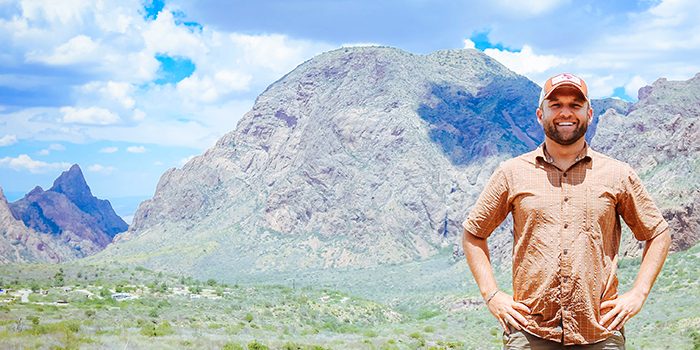
While tripping to civilization is great, sometimes you must answer the call of the desert and trip to the farthest reaches of Texas. Big Bend National Park sits on the banks of the Rio Grande River where Texas and Mexico collide into a magical place where time slows down and the civilized world fades into a natural wonderland.
Culture
Before starting your journey, it’s a great idea to first head to Panther Junction Visitor’s Center, the park’s headquarters and the largest visitor’s center. They’ve got all the resources you’ll need to map out where you’re going, as well as a friendly park ranger who’ll be happy to help you figure out the best routes. You can also get your backcountry and river use permits here. There’s even a small museum where you can learn about the history of Big Bend, which was the first national park in Texas started in 1944.
Outdoors
First here's A Few Camping Tips...
Now, before you set out on your big adventure, be sure you’ve packed TONS of water. Out on the trails, the sun is sweltering and there aren’t any places to fill up, so make sure you’ve got enough to stay hydrated. Also, when you get there, the park will be so amazing that you’ll want to see everything…but that’s not possible, folks. Pick a few spots per trip and leave the others for your next adventure. And lastly, remember, everything in this park is living, and you’re trekking through its home, so be respectful and careful. While 1200+ square miles of desert is hard to wrap your head around, think of Big Bend as having 3 separate parts – Mountains, River, and Desert Lowlands. Each one is full of amazing things to explore, and we’ll share some thoughts accordingly below.
The Chihuahuan Desert is an incredible ecosystem with some incredible hikes. A great first hike to take is the Grapevine Hills Trail, which is a pretty easy 2 mile hike where you can get the lay of the land and stretch your legs. Along this trail, you’ll find one of the most iconic views in Big Bend: Balanced Rock, a natural formation where a giant boulder is resting upon two towering pillars of rock. It’s an outta this world site and an epic climbing spot!
You should also check out Ernst Tinaja, Devil’s Den and the Lower Burro Mesa Pour-Off Trail. Find more details here.
Outdoors
Smack in the middle of the park is an incredible mountain range rising out of the desert floor. Take the road into the high-country and your first stop will be Chisos Basin Visitor’s Center to learn about the animal life and hiking up here. You’ll also find the only Lodge and only restaurant in the park – Chisos Mountain Lodge Restaurant. Here you can grab a meal without having to leave the amazing views behind — and the food is really good too.
There are a dozen trails that explore this mountain range, but the South Rim Trail is my favorite. It’s also the hardest and simultaneously most rewarding. This trail is a grueling, 7 1/2 mile uphill hike, but the view at the top of the South Rim is jaw-dropping and you can see for miles into both Texas and Mexico. The journey along the way isn’t half-bad either, with tons of wildlife, trickling springs and an ever-changing terrain. I highly recommend breaking up the hike by camping in between. You’ll need a back country permit for that.
As you hike along the South Rim Trail, you’ll see bear boxes that will keep your food and things safe as you hike the strenuous trail up to Emory Peak. The three mile hike up to the peak is steep and tasking (and at some points it’s less of a trail and more of a rock-climb), but the view at the top is more than worth it. Standing a towering 7, 825 ft. above sea-level, you get a breathtaking panoramic view atop the tallest point in Big Bend.
In the Chisos, you should also check out the Window Trail and Lost Mine Trail. Details Here.
Outdoors
This “wild and scenic” river winds for 118 miles around the park acting as its southern border. It’s known for rough canyons and abandoned vistas. All along the way are amazing stops. My favorite is the Boquillas Hot Springs that used to be a tourist resort but is now a bubbling spring that flows into the ruins of the old camp. It’s gotta be the most historic natural hot tub in Texas. On the hike there you’ll find pictographs (ancient rock paintings) and petroglyphs (ancient rock carvings). There are also ruins nearby from the old 1914 resort. It’s amazing to find such a natural beauty that is both relaxing and historic!
Another must-stop is Santa Elena Canyon. It’s breathtaking and we’re definitely worth trekking to. If you’ve got your passport, don’t miss a trip to Boquillas, Mexico. It’s open, safe and depends on park tourists to stay healthy.
Check out our trip to nearby Terlingua, TX here.
Keep Exploring
Big Bend National Park











